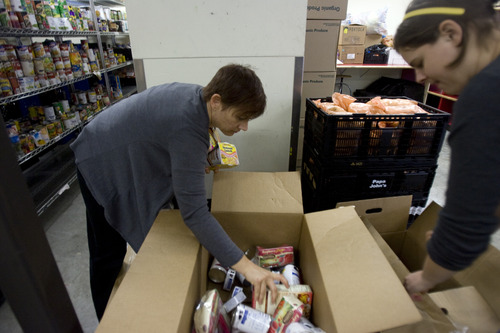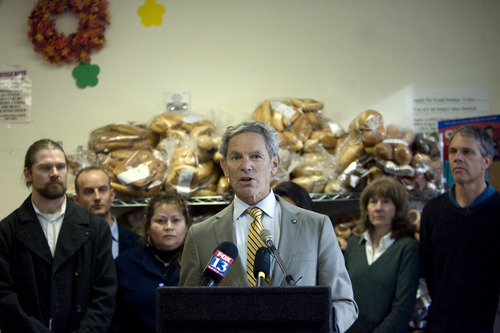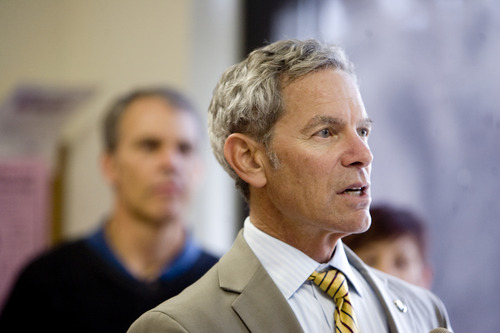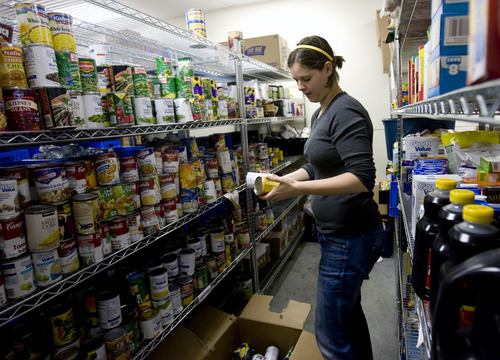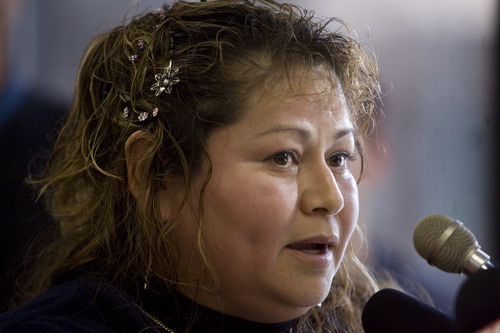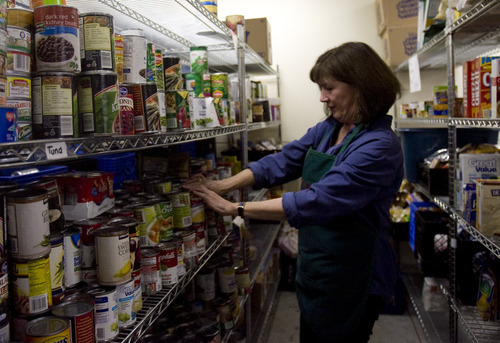This is an archived article that was published on sltrib.com in 2012, and information in the article may be outdated. It is provided only for personal research purposes and may not be reprinted.
Food insecurity in Salt Lake City is on the rise, and for one food pantry director, it's the hungry children that really tug at her heart.
"Over these past [few] years, I've seen a lot of working families — where both parents are working — and they still cannot make ends meet," said Hildegard Food Pantry Director Lydia Herrera.
"I just want to tell you that hunger knows no season," Herrera said, noting that for the first time in her 12 years at Hildegard's, she had to shut down for a day this past summer because demand outpaced supply and the shelves had gone bare.
It was from this haven of hope Wednesday that Salt Lake City officials released results of a new study aimed at developing a vibrant, sustainable and equitable food network that can meet the area's growing needs.
Compiled by the city's Food Policy Task Force, the Community Food Assessment spotlighted area strengths and weaknesses.
The report showed that in some sectors, a significant amount of residential and restaurant food waste occurs.
"In Salt Lake City, 20 percent of the food going to the landfill is consumable," said Sustainability Outreach Manager Bridget Stuchly, adding that the challenge is figuring out how to get it into the hands of the people who need it.
The report also revealed "food deserts" — neighborhoods that lack grocery stores, leaving low-income residents to buy less nutritious food at the nearest convenience store. Salt Lake City residents have a higher rate of diabetes than the national average, the study said.
Salt Lake City officials are currently working to rewrite ordinances "to identify where we get in the way of people producing and selling their own food," Mayor Ralph Becker said.
Becker pointed to the west Capitol Hill neighborhood where property owners spent five years unsuccessfully trying to woo a grocery store. Becker hopes such obstacles can be overcome and more services can be provided close to home.
The report also named several Salt Lake City strengths, including a surge of certified organic growers, close to two dozen community gardens and a robust enclave of farmers markets that sell locally grown food.
"We're leaders in Utah and among the leaders in the country," Becker said of the comprehensive food analysis. The goal is to become more self-sufficient, he added.
"Agriculture is really at the heart of a livable community and a livable society," Becker said.
Sara Ma, a senior at West High School, is part of the Utahns Against Hunger Real Food Rising Project that works with city officials and area food pantries to combat the growing problem.
"Our goal is to eliminate the hunger issue in Utah," Ma said, adding that "this is a task for every individual in the community."
Herrera issued a plea Wednesday for more donations of healthy food, money and time, saying that her client numbers have expanded from 1,100 to 3,000 each month. And with the fast-approaching holidays, she estimated the need for an additional 500 frozen turkeys.
"In making a count and seeing all those little ones that we have … we probably have people who will not have a turkey on the table," Herrera said.
For more information about Hildegard's Food Pantry at 231 E. 100 South, call 801-328-2303.
Twitter: @catmck —
SLC food facts
48 • Utah Certified Organic operations in 2007, up from 3 in 1997
22 • School, neighborhood and community gardens in the city
8 • Farmers Markets in the Salt Lake City area
12 million • Pounds of food transferred to the Utah Food Bank in fiscal year 2012 via grocery rescues
22,780 • Federal food stamp participants in Salt Lake City in December 2011
7.64 percent • Diabetes occurrence in 2010. National average was 6.75 percent
20 percent • Of the city's residential waste stream is food scraps
Source: Salt Lake City Community Food Assessment


